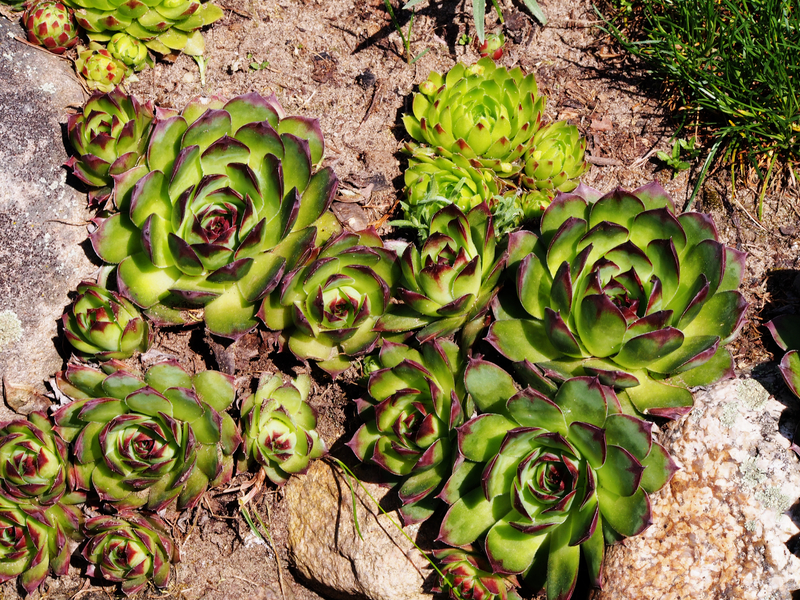Three Ways to Make Your Garden Ready to Move
Are you preparing for a big move and wondering how to get your garden ready to move? Moving house is challenging enough, but if you are a passionate gardener, the thought of leaving behind your beloved plants and outdoor sanctuary can be stressful. Fortunately, with careful planning and some strategic steps, you can make the transition smooth for both you and your plants. In this comprehensive article, we'll discuss three actionable ways to prepare your garden for moving day, ensuring that your green companions thrive in their new home.

Why Preparing Your Garden for a Move Matters
Gardening enthusiasts know that a garden is more than just a collection of plants. It holds sentimental value, time investment, and can greatly increase the curb appeal of a property. Before you relocate, it's essential to ensure your garden is relocation-ready to minimize plant shock, save money, and maximize your real estate return. Below, we'll guide you through three key approaches to make your garden ready for a move.
#1: Plan, Prepare, and Prioritize Your Plants
Understanding What to Move and What to Leave
Not every plant can or should make the journey to your new home. The first step in preparing your garden for relocation is to critically evaluate your existing plants:
- Age and Size: Larger, well-established plants, trees, or shrubs may not survive transplanting. Focus on smaller, healthy plants with manageable root systems.
- Sentimental Favorites: Identify plants with sentimental value--perhaps a rosebush from a wedding or a plant gifted by a loved one--and prioritize moving those.
- Legal and Environmental Restrictions: Some regions restrict the movement of certain plants due to pests or diseases. Research local regulations at your new location.
- Native vs. Exotic: Native species are typically easiest to relocate and thrive, whereas exotic specimens may need special care and permits.
Create a Moving Inventory
Develop a comprehensive inventory of the plants and gardening items you plan to move. Include details such as:
- Plant type and species
- Special care instructions
- Seasonal flowering or fruiting periods
- Preferred soil and lighting
Having this inventory streamlines communication with movers and helps you recreate your garden after the move.
Timing is Key--Move at the Right Time
When it comes to plant relocation, timing can make all the difference. Here's what to consider:
- Dormant Season: Moving plants during their dormant period--usually late fall to early spring--minimizes shock and improves survival rates.
- Avoid Extreme Temperatures: Try to avoid peak summer or winter, which can make plants more susceptible to stress.
#2: Prepare Plants and Garden Features for Easy Transport
Transplanting Your Garden--Step by Step
Proper transplantation is vital in ensuring your garden survives the move. Follow these steps for best results:
- Water Thoroughly: Water your plants a day before digging them up. Hydrated roots handle trauma better.
- Prune and Trim: Remove dead or excessive foliage to reduce stress and make plants more manageable to transport.
- Dig Carefully: Dig around the root ball, starting at least 6 inches away from the stem for small plants and up to 18 inches for larger ones.
- Contain the Roots: Place the root ball in a plastic bag, burlap, or container to retain moisture and keep soil intact.
- Label Plants: Use waterproof labels with each plant's name and care instructions.
Moving Garden Ornaments, Pots, and Decor
Your garden is more than just plants--don't forget about:
- Garden statues and fountains
- Pots, planters, and hanging baskets
- Decorative stones or pavers
- Children's play equipment
- Compost bins or worm farms
Clean, dry, and pack these items securely using bubble wrap or newspapers to avoid damage during transit.
Preparing a Portable Garden
If you can't move everything, consider creating a portable garden. This could include:
- Container gardens: Transplant your favorite plants into lightweight pots and grow bags before moving day.
- Seed collection: Harvest seeds from your favorite perennials or heirlooms to start anew at your next home.
- Cuttings and divisions: Take cuttings or divide established plants, which travel better and adapt quickly post-move.
This strategy not only saves space but increases your chances of successful garden re-establishment in your new location.
#3: Prepare the New Garden Space in Advance
Scout and Assess Your New Garden
To make your new garden ready for planting, try to visit ahead of your move. Assess:
- Soil quality and pH
- Sunlight and shade patterns
- Water availability and drainage
- Space for expansion
Note any major differences from your previous garden and plan locations for your most precious plants accordingly.
Prepare the Soil Before You Plant
The success of your garden move hinges on healthy soil. Prepare ahead by:
- Removing weeds and debris
- Loosening compacted soil
- Mixing in compost or organic matter
- Testing and amending soil pH, as needed
Healthy, nutrient-rich soil gives your relocated plants the best chance to thrive after transplanting.
Plant Gently and Water Frequently
Once you arrive:
- Unpack plants quickly and avoid leaving root balls exposed for long.
- Plant at the same depth as before and gently firm the soil around the roots.
- Water thoroughly to settle roots and eliminate air pockets.
- Mulch to retain moisture and stabilize soil temperature.
For the first few weeks, monitor your plants daily for wilting, pests, or transplant shock, and adjust care as needed.
Extra Tips for a Stress-Free Garden Move
Packing Your Plants the Smart Way
Keep foliage dry to minimize fungal risk during the move. Pack taller plants upright in boxes with gentle support, and transport delicate flowers in your vehicle if possible.
Communicating with Your Buyers
If you're selling your current home, clarify with buyers (and in your contract) which garden plants and features are staying or moving with you. Transparency prevents misunderstandings and possible legal issues.
Know Your Limits
No time to handle it all? There are professional garden moving services that can help with lifting, transport, and even garden design at your next property. Sometimes, leaving mature garden elements behind adds to the value of your home and offers a fresh start at your new address.

FAQ: Making Your Garden Move-Ready
Can you take plants with you when you move house?
Yes, you can take plants when moving to a new house, but be aware of potential state or regional restrictions. Prepare plants properly for travel and always communicate with the new homeowners about what you intend to take.
When is the best time of year to move a garden?
The dormant season--late fall through early spring--is ideal for safely relocating most plants and shrubs. This allows them to establish before active growth resumes.
How do you reduce plant stress during a move?
Transplant during cool weather, water well, minimize root disturbance, protect from sunlight and wind during transit, and replant as soon as possible. Applying an anti-transpirant can also help reduce water loss during the move.
Conclusion: Give Your Garden a Fresh Start in Your New Home
While moving home is always a major life event, getting your garden ready to move doesn't have to be daunting. With clear planning, careful packing, and some advance preparation at your new site, you can give your favorite plants--and yourself--a fresh, blooming chapter. Remember these three key approaches to make your garden move-ready:
- Plan and prioritize which plants and garden features to bring.
- Prepare and pack your plants and decor properly for transport.
- Ready your new garden space for a smooth, successful transition.
By following these strategies, your garden won't just survive the move--it'll flourish wherever home takes you next!
If you found this article helpful, share it with fellow garden enthusiasts facing a move or bookmark it for your next relocation adventure!